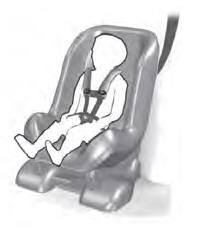Lincoln Aviator: Engine - 3.0L EcoBoost / Removal and Installation - Oil Pump
Removal
NOTICE: During engine repair procedures, cleanliness is extremely important. Any foreign material, including any material created while cleaning gasket surfaces, that enters the oil passages, coolant passages or the oil pan, can cause engine failure.
-
Remove the engine front cover.
-
Remove the bolts and the oil pump return tube.
.jpg) |
-
Remove and discard the O-ring seals.
.jpg) |
-
Remove the bolts and the splash shield.
.jpg) |
-
-
Remove the oil pump bolts.
-
Lower the rear of the oil pump assembly.
-
Separate the oil pump sprocket from the oil pump drive belt.
-
Remove the oil pump bolts.
.jpg) |
Installation
-
Prime the oil pump. Add 2 tablespoons of clean engine oil to the oil pump and rotate the oil pump by hand.
-
NOTE: Make sure the oil pump drive belt teeth are engaged in the crankshaft sprocket prior to installing the oil pump.
-
Install the oil pump sprocket into the oil pump drive belt.
-
Raise the rear of the oil pump assembly into the installed position.
-
Install the oil pump bolts.
Torque:
Stage 1: 89 lb.in (10 Nm)
Stage 2: 45°
-
Install the oil pump sprocket into the oil pump drive belt.
.jpg) |
-
Install the splash shield and the bolts.
Torque: 89 lb.in (10 Nm)
.jpg) |
-
-
Install new O-ring seals.
-
Lubricate the O-ring seals with clean engine oil.
-
Install new O-ring seals.
.jpg) |
-
Install the oil pump return tube and the bolts.
Torque: 89 lb.in (10 Nm)
.jpg) |
-
Install the engine front cover.
 Removal and Installation - Oil Pan
Removal and Installation - Oil Pan
Materials
Name
Specification
Motorcraft® High Performance Engine RTV SiliconeTA-357
WSE-M4G323-A6
Motorcraft® Silicone Gasket RemoverZC-30-A
-
Motorcraft® Metal Surface Prep WipesZC-31-B
-
Motorcraft® Metal Brake Parts CleanerPM-4-A, PM-4-B
-
Removal
NOTICE:
During engine repair procedures, cleanliness is extremely
important...
 Removal and Installation - Oil Pump Drive Belt
Removal and Installation - Oil Pump Drive Belt
Removal
NOTICE:
During engine repair procedures, cleanliness is extremely
important. Any foreign material, including any material created while
cleaning gasket surfaces, that enters the oil passages, coolant passages
or the oil pan, can cause engine failure...
Other information:
Lincoln Aviator 2020-2026 Owners Manual: Setting the Liftgate Open Height
Open the liftgate. Stop the liftgate movement by pressing the control button on the liftgate when it reaches the desired height.Note: Once the liftgate has stopped moving, you can also manually move it to the desired height. Press and hold the liftgate control button on the liftgate until you hear a tone, indicating programming is complete...
Lincoln Aviator 2020-2026 Service Manual: Description and Operation - Information and Entertainment System - Component Location
NOTE: The available speaker configurations are shown first. The remaining hidden audio/SYNC system components and various cable routings follow the speaker configurations. NOTE: Some vehicles may not be equipped with all the optional components shown...
Categories
- Manuals Home
- Lincoln Aviator Owners Manual
- Lincoln Aviator Service Manual
- Tire Change Procedure
- Changing the Front Wiper Blades - Vehicles With: Heated Wiper Blades
- Interior Lamps
- New on site
- Most important about car
Child Seats

Use a child restraint (sometimes called an infant carrier, convertible seat, or toddler seat) for infants, toddlers and children weighing 40 lb (18 kg) or less (generally four-years-old or younger).
Using Lap and Shoulder Belts
WARNING: Do not place a rearward facing child restraint in front of an active airbag. Failure to follow this instruction could result in personal injury or death.
